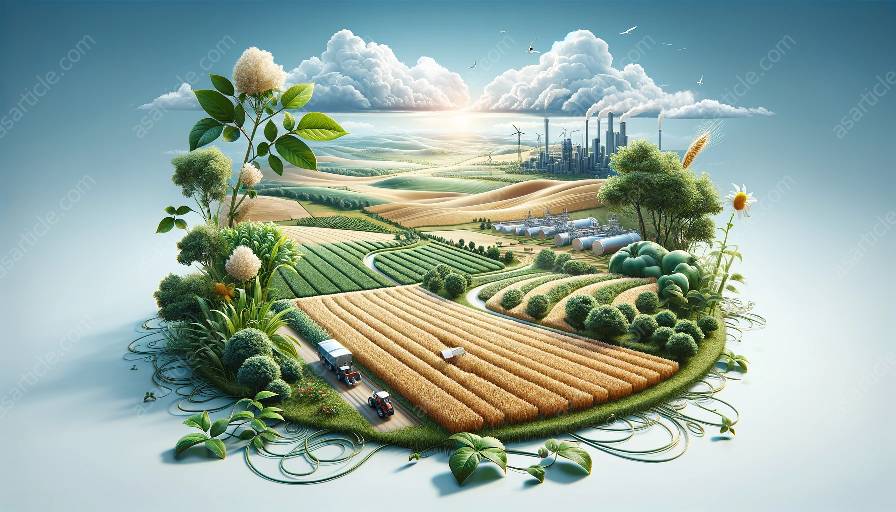Fertility of soil, essential for optimal crop growth, is a topic that naturally intersects with agricultural sciences and fertilizer technology. Understanding the intricate balance of nutrients, microbial activity, and organic matter in the soil is critical to maximizing agricultural productivity. This comprehensive topic cluster delves into the various aspects of soil fertility and fertilizers, their impact on agricultural sciences, and the latest advancements in fertilizer technology.
Understanding Soil Fertility
Soil fertility refers to the soil's capacity to provide essential nutrients and an optimal environment for plant growth. It encompasses the physical, chemical, and biological properties of the soil that contribute to its productivity. Key factors that influence soil fertility include:
- Soil Nutrients: Nutrient levels in the soil, including macronutrients (nitrogen, phosphorus, and potassium) and micronutrients (iron, zinc, copper, etc.), play a crucial role in determining soil fertility. Understanding the nutrient requirements of different crops is essential for effective fertilization strategies.
- Organic Matter: The presence of organic matter in the soil is vital for maintaining soil structure and promoting microbial activity. Organic matter contributes to nutrient retention, water-holding capacity, and overall soil health.
- Microbial Activity: Soil microorganisms, such as bacteria, fungi, and actinomycetes, play a pivotal role in nutrient cycling and soil organic matter decomposition. Their activities significantly impact soil fertility and plant nutrition.
Enhancing Soil Fertility
Improving soil fertility is a multifaceted endeavor that involves sustainable agricultural practices, soil amendments, and effective fertilization techniques. The following approaches are instrumental in enhancing soil fertility:
- Crop Rotation and Cover Crops: Rotating crops and incorporating cover crops help maintain soil health by preventing nutrient depletion and controlling pests and diseases.
- Composting: Utilizing organic waste materials to create compost enriches the soil with valuable nutrients and enhances its organic matter content.
- Soil Testing and Nutrient Management: Regular soil testing allows farmers to assess the nutrient status of the soil and tailor fertilization practices to meet specific crop requirements.
- Conservation Tillage: Adopting conservation tillage practices minimizes soil disturbance, reduces erosion, and preserves soil structure, thus contributing to improved soil fertility.
The Role of Fertilizers
Fertilizers are essential inputs that supplement soil nutrients to support plant growth and maximize yields. Different types of fertilizers, including synthetic, organic, and bio-based formulations, are utilized to address specific nutrient deficiencies and enhance soil fertility.
Fertilizer Technology and Agricultural Sciences
The synergy between fertilizer technology and agricultural sciences has led to significant advancements in enhancing soil fertility and sustainable crop production. Fertilizer technology advancements encompass:
- Fertilizer Formulations: Ongoing research and development in fertilizer technology have led to the creation of tailored formulations that release nutrients at specific rates, catering to the needs of different crops and soil types.
- Controlled-Release Fertilizers: Innovative controlled-release fertilizers offer precise nutrient delivery, minimizing nutrient loss and maximizing plant uptake efficiency.
- Nutrient Management Systems: Integrated nutrient management systems leverage technology to optimize fertilizer use, reduce environmental impact, and enhance overall soil fertility.
Sustainable Fertilization Practices
Modern agricultural sciences emphasize the adoption of sustainable fertilization practices that promote soil health, environmental stewardship, and long-term agricultural sustainability. The integration of fertilizer technology with agricultural sciences plays a pivotal role in:
- Precision Agriculture: Utilizing data-driven approaches, precision agriculture enables farmers to apply fertilizers with precision, considering the spatial and temporal variability of soil properties.
- Soil-Plant Interaction Studies: Agricultural sciences leverage interdisciplinary research to understand the intricate relationship between soil, plants, and fertilizers, driving the development of tailored fertilization strategies.
- Sustainable Nutrient Cycling: Harnessing innovative technologies, agricultural sciences focus on promoting nutrient cycling within agroecosystems, reducing reliance on external inputs and minimizing nutrient loss.
Conclusion
In conclusion, the comprehensive understanding of soil fertility, fertilizers, fertilizer technology, and agricultural sciences is indispensable for sustainable agriculture and food security. The intricate interplay between soil properties, nutrient dynamics, and modern fertilization practices underscores the dynamic nature of this topic cluster. By continuing to explore the latest research, technological innovations, and best agricultural practices, the agricultural community can effectively harness soil fertility and fertilizers to meet the growing demands of global food production.

